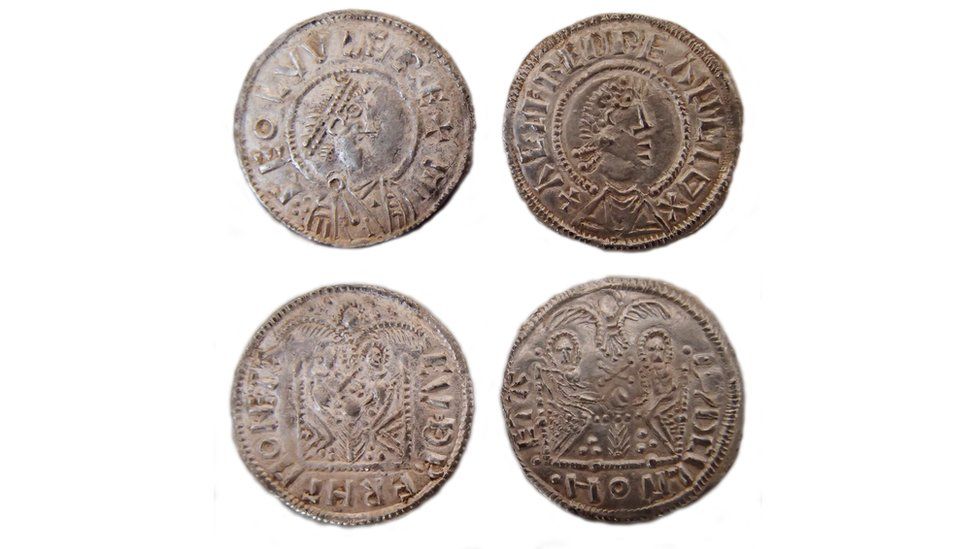Viking coins, often referred to as “Viking Age” coins, are a fascinating aspect of numismatic history, reflecting the extensive trade networks and cultural interactions of the Vikings from the late 8th to the early 11th centuries. Here are the key details about these coins:
Key Facts
- Period: Late 8th century to early 11th century (circa 790-1100 AD)
- Regions: Primarily Scandinavia (Denmark, Norway, Sweden) but also influenced by trade with the British Isles, Continental Europe, and the Islamic world.
- Material: Mostly silver, some gold and bronze.
- Types: Coins from various regions, including those minted by Vikings themselves and those they acquired through trade and plunder.
Design Features
- Obverse (Front):
- Typically features a portrait of a ruler or a symbolic image.
- Inscriptions in Latin or runic script, indicating the ruler’s name and title.
- Reverse (Back):
- Often depicts a Christian cross or other religious symbols, reflecting the spread of Christianity.
- Inscriptions may include mint marks or other identifying features.
Notable Types
- Danish Viking Coins:
- Hedeby Coins: From the important trading center of Hedeby, often featuring simple designs with runic inscriptions.
- Coins of Harald Bluetooth: Featuring Christian symbols, reflecting the king’s conversion to Christianity.
- Norwegian Viking Coins:
- Olaf Tryggvason’s Coins: Early Christian coins featuring crosses and inscriptions.
- Coins of Cnut the Great: Reflecting his reign over a North Sea empire that included England, Denmark, and Norway.
- Swedish Viking Coins:
- Coins from Sigtuna: Important minting site, coins often feature a mix of pagan and Christian symbols.
- Anglo-Viking Coins:
- St. Peter Coinage: From Viking-controlled York, featuring Christian symbols and the name of St. Peter, reflecting the influence of both local and Viking culture.
- Islamic Coins:
- Dirhams: Silver coins from the Islamic Caliphates, widely circulated and often found in Viking hoards. These coins were valued for their high silver content and were sometimes re-struck with Viking motifs.
Historical Context
- Trade and Economy: Vikings were not only raiders but also traders. They engaged in extensive trade networks that stretched from the British Isles and Europe to the Byzantine Empire and the Islamic Caliphates.
- Cultural Exchange: Viking coins reflect the cultural exchanges and influences between the Vikings and the various civilizations they interacted with. This is seen in the blending of pagan and Christian symbols and the use of different languages and scripts.
- Hoard Discoveries: Viking coins are often found in hoards, buried for safekeeping. These hoards provide valuable insights into the economy and trade practices of the Viking Age.
Collecting and Value
- Rarity: Viking coins are relatively rare compared to other ancient and medieval coins, making them highly prized by collectors.
- Condition: The value depends on the coin’s condition, rarity, and historical significance. Well-preserved coins with clear inscriptions and designs are more valuable.
- Authentication: Due to their value, Viking coins are sometimes forged. Authenticity can be verified through reputable dealers and grading services.
Viking coins are a remarkable testament to the Viking Age’s complexity, showcasing the interplay of raiding, trading, and cultural exchange. Collectors and historians value these coins for their historical significance, craftsmanship, and the stories they tell about a pivotal era in European history. Proper authentication and provenance are crucial when acquiring these coins to ensure their historical integrity and value.
